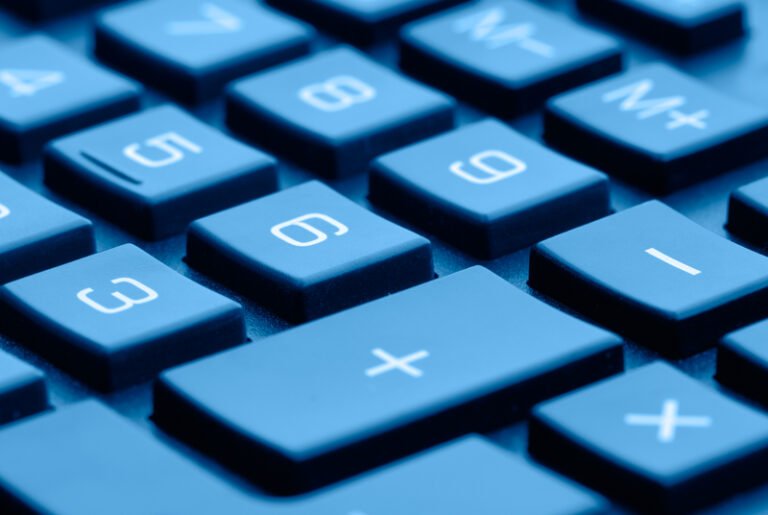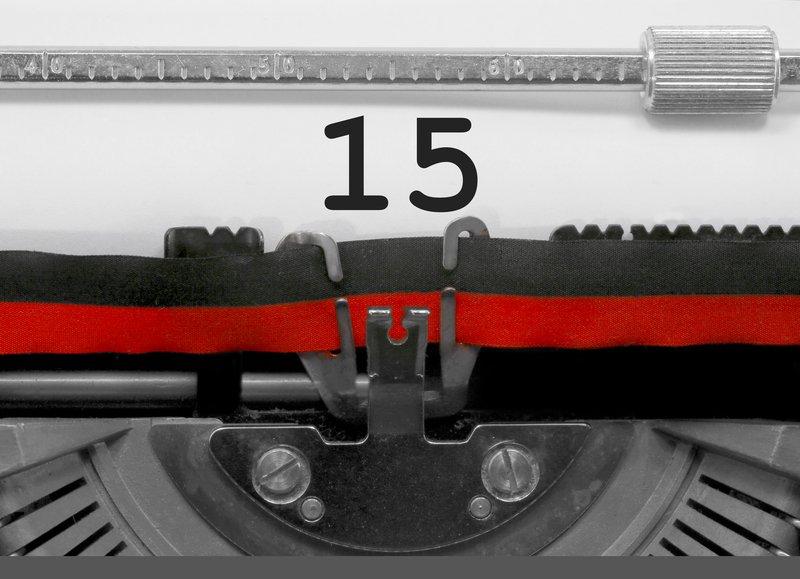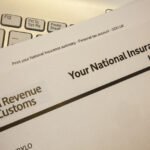Being in business for yourself means you’re in control of your professional destiny. The flipside is that you also have to take care of tasks employees don’t have to worry about, like working out how much you owe the taxman at the end of each financial year.
As it happens, if you’re a sole trader or member of a partnership (i.e. self employed), doing your taxes is more straightforward than you’d think.
Let’s look at the UK tax rules for self-employed people so you can prepare your tax return like a pro.
This article has been updated for the 2025/26 tax year. Try our sole trader tax calculator.
How do the self employed pay tax in the UK?
Sole traders pay tax at the same rates as employees do. The key difference is that, where employees pay tax on their income, sole traders pay tax on their profits. This means that to work out how much tax you owe as a sole trader, you need to:
- Tot up your total revenue — the income you make from selling your products or services — for the whole year (bear in mind that the UK’s financial year runs between 6 April and 5 April)
- Tot up your allowable expenses and deduct them from your revenue
The number you’re left with is your taxable profit. This is the amount you’ll have to pay tax on.
What are allowable expenses?
Allowable expenses are business-related expenses which HMRC lets you deduct from your revenue. These expenses lower your taxable profit, which means you’ll pay less tax.
Some common allowable expenses include:
- Raw materials you need to manufacture your products
- Equipment you need to do your job, such as your laptop, a delivery van, or safety goggles
- Marketing costs
- Professional fees, for example, your accountant or solicitor’s bills
- Office costs such as rent and utilities
- Insurance
- Training — this includes courses, seminars, and business books
- Bank charges
You can work out whether an expense is likely allowable by applying the “wholly and exclusively” rule. This rule states that an expense is allowable if:
- It has purely a business purpose. In other words, you wouldn’t have bought it if you didn’t own your business.
- The expense is partly business and partly personal, but you can show how much of it — called a ‘definite proportion’ — was business-related
Understanding allowable expenses: example 1
Let’s say you’re a professional photographer.
Your clients pay good money for you to memorialise important occasions, so your photos must be of outstanding quality. As a result, you invest in a high-end camera and a set of expensive lenses.
This equipment is essential to your job. Your clients wouldn’t be impressed if you tried shooting their wedding day with an iPhone, would they?
So, in this case, you’ve passed the “wholly and exclusively” rule. Your camera and lenses are allowable expenses.
Understanding allowable expenses: example 2
Now, let’s say you own a Vauxhall Insignia.
Free Tide Business Bank Account - £50 Cashback!

Open a free business current account to qualify + enjoy 12 months free transactions. Read our Tide review.
You use the car to drive to client appointments and shoot locations. But you also use it for family trips.
In this case, the car is used for both business and personal purposes, so you can’t claim the full purchase price and all the running costs as a business expense. You’ll need to work out the business proportion of the expense.
To do this:
- Track your business and personal mileage. You can do this easily with a mileage tracker app such as MileIQ or Tripcatcher
- Work out how much your business mileage is as a percentage of your total mileage and deduct that amount. So if 40% of your total mileage is business-related, you can claim 40% of your car’s purchase price plus 40% of running costs
- Alternatively, use HMRC’s approved mileage allowance rates
One last word on expenses that are only partly business-related
It’s worth noting that for the “wholly and exclusively” rule to apply to expenses that are partly business and partly personal, you must be able to show exactly how much is business-related. This is because only the business proportion is an allowable expense. The upshot is that you can’t claim the expense if you can’t find a definite proportion.
This is the case with business lunches, for instance. Here, while you might not have eaten out if you weren’t entertaining a client, HMRC takes the view that you’d still need to eat to live. You can’t separate the business proportion from the personal, so you can’t claim.
That said, when it comes to meals, there’s an exception. HMRC allows you to claim the cost of food and drink as a business expense if:
- You’re travelling and have to stay away from home overnight
- The trip is “wholly and exclusively” for business
- You leave as soon as the business purpose is over
- The cost is “reasonable”
How to work out your 2025/26 income tax bill if you’re self employed
Now that you know how to work out allowable expenses, it’s time to find out how to work out your income tax.
It’s worth noting that you can only claim expenses if you keep the receipts. HMRC simply requires business records to be “complete, accurate, and readable.” So, as long as you meet those requirements, you can store your receipts any way you please.
That said, it’s worth investing in accounting software. Over the past several years, the UK government has been working on an initiative called Making Tax Digital. This will eventually require every self-employed person to file their taxes online using approved software. Setting up accounting software now will save you a lot of time and effort down the line.
With that out of the way, let’s get down to it.
As a sole trader, you pay tax at current government rates. In 2024/25, these rates are:
- 0% on your first £12,570
- 20% on £12,571 to £50,270
- 40% on £50,271 to £125,140
- 45% on anything over £125,140
These rates apply in England and Northern Ireland. Scotland and Wales have slightly different rates and brackets.
If you know your revenue and your allowable expenses, working out your income tax is super simple.
Let’s say you live in England and your revenue was £60,000 in 2025/26. You spent £10,000 on allowable expenses, so your taxable profit is £50,000.
The first £12,570 of that are tax free.
This leaves £37,430, which falls in the 20% tax bracket. So, you owe HMRC £7,486.
What about National Insurance contributions in 2025/26?
Alongside income tax, you also have to pay National Insurance. If you’re self employed, you pay two types of National Insurance: Class 2 and Class 4.
Class 2 National Insurance is currently £3.50 a week. But contributions are voluntary. You only need to pay Class 2 NICs if your annual profits are below £6,8455 per year to make sure the tax year counts towards your State Pension.
You pay Class 4 National Insurance if your profits are £12,570 or more. You pay:
- 6% of your profits between £12,570 and £50,270
- 2% on anything over £50,270
When do I pay my taxes if I’m self employed?
There are three dates you need to keep in mind when it comes to paying your taxes:
31 October
This is the deadline for filing your taxes if you file your self assessment tax return by mail. So, the deadline for the 2024/25 tax year is 31 October 2025.
31 January
Filing your self assessment tax return online wins you an extra three months. Your deadline is 31 January. So, for 2024/25, you’d need to file (and pay) your tax bill by 31 January 2026.
You might also need to make your first payment on account.
A payment on account is an advance tax payment, and it’s equal to 50% of your last tax bill. So, if you paid £5,000 in taxes in 2024/25, you’d need to make a first payment on account of £2,500 for the 2025/26 tax year by 31st January 2026.
You only have to make a payment on account if your last tax bill was £1,000 or over. The payment will count towards your income tax and Class 4 National Insurance contributions, but not towards your Class 2 National Contributions.
31 July
This is an important date that many overlook: it’s the deadline to make your second payment on account. In the example above, this is an extra £2,500 – to be paid by 31st January 2026.
You can pay your tax bill one of four ways:
- Log on to your Government Gateway account and set up a direct debit
- Using your debit or credit card (credit card fees may apply)
- Make a bank transfer to one of HMRC’s accounts
- Send a cheque through the post
Wrapping up
Working out and paying your tax bill if you’re self employed may seem like a lot of work. But it’s quite straightforward if you keep track of your revenue and allowable expenses throughout the year.
Here’s a parting tip: regularly set aside money for your tax bill. An easy way to do this is to set aside around 30% of every invoice in a separate bank account.
That way, you’ll avoid nasty surprises at the end of your financial year.










